Werewolf (2018)
Directed by: Adrian Panek
Written by: Adrian Panek
Starring: Danuta Stenka, Kamil Polnisiak, Nicolas Przygoda, Sonia Mietielica
AKA WILKOLAK
Germany/The Netherlands/Poland
AVAILABLE ON DUAL FORMAT BLU-RAY AND DVD: 18th November, from EUREKA ENTERTAINMENT
RUNNING TIME: 88 mins
REVIEWED BY: Dr Lenera, Official HCF Critic
February 1945: Germany have all but lost World War 2. The Gross-Rosen concentration camp is liberated by the Russian army and eight children are transported to a temporary orphanage housed in a dilapidated mansion in the forest. But it’s hard for them to regain what’s left of their childhood when there’s only food and water for two days, marauding German and Russsian soldiers could come by at any time, and the camp dogs, driven mad with hunger, make their way through the forest and surround the mansion….
You could say, if you wanted to, that the title is misleading, because, while there are a few references to werewolves and the children mention that the SS officers were turned into wolves, there isn’t a werewolf in the film, even though there are some very vicious German Shepherd dogs menacing our main human characters throughout most of it. But I think that writer/director Arian Panek intended the title to be metaphorical. One can of course claim that all monsters are metaphors for something, though I try not to go into that kind of thing much when I’m reviewing a creature feature because the creators often had nothing of the kind on their minds, and it can take all the fun out of these films to try to sound all intellectual. But with Werewolf, it’s quite clear that, while there are no half-man half-wolf beings on screen, you can apply the term “werewolf” – or maybe that should be the original Polish “wilkolak” – to the eight children in the film. When we first encounter them, their life in the concentration camp has reduced them to being very bestial, and once out of the place the humanity in them is desperately struggling to come out but the feral side of their nature makes this difficult. They’re basically half-human. half-beast. This is perfectly shown in an early scene when, as they approach the house in which they’re about to live, some of them chase a rat and stamp it to death, just as they witnessed German soldiers shooting dead some prisoners just a short time before. The first instance of violence after we leave Gross-Rosen is perpetrated not by a German, a Russian, or a dog, but by some of the children. However, immediately afterwards they start playing tag as if it was perfectly natural, their innocent childish side suddenly coming out. These kids are still ravenous and uncontrollable though – just like the dogs who we first get an idea of when one of them is set upon a prisoner in the camp. It’s humans who have trained them to be so vicious.
Of course the idea of a story about concentration camp children menaced by dogs may immediately strike some as being crass, especially when Panek dresses it up as a horror film with much use of horror film conventions, and I reckon that complaints from the tiresome “I’m offended” crowd would have accompanied its release if it had been given a major theatrical release in English-speaking countries. Of course I’d personally argue that horror is a great genre for dealing with nasty subjects we don’t want to think about and has done so successfully for many decades. And the fact that the monsters in the film were made monsters, and not just monsters but bigoted monsters just like their masters, seem to me to be to certainly one aspect that help negate arguments of tastelessness. In fact we’re not far away from White Dog here, the one about the dog trained to attack black people, which anyone with half a brain will tell you is an anti-racist tract despite idiot studio heads stopping its theatrical release in 1982. Of course you can also see it as a kind of reverse The Lord Of The Flies where the children begin as wild animalistic creatures but their nicer side starts to come out. But there’s no doubt that Panel has still produced quite an unusual and resonant piece here that’s extremely atmospheric, highly suspenseful and very well acted indeed by its youthful protagonists. Having children, and mostly pretty young children at that, immediately makes the viewer feel even more nervous for them then if they were adult ex-prisoners. So you’ll probably be on tenterhooks throughout, so much so that you may miss some of the thematic layering that Panek has brought to his film, layering that adds weight and may make matters seem less exploitative of a terrible period of recent history if you’re of the type who will find it uncomfortable in the wrong way.
The SS are in the process of abandoning Gross-Rosen, but before they go, they force the inmates to do pointless exercises, with anyone resisting set upon by the dogs. This includes the children, and one thing this film does very well is give the impression that they’ve had a truly horrible existence without telling us much. We can imagine, so we don’t really need to be told. Hanka is 20 and the eldest by several years, and therefore the de facto leader, though it’s from the point of view of the quiet and possibly irreparably disturbed Wladek, played with subtle intensity by Kamil Polnisiak, through which we witness many of the events. The youngest is six-year old Mala, and many times she’s on screen you’re eyes will be drawn to her, because, while all of them are good, Matylda Ignasiak has an incredibly luminous screen presence and is given some of the most touching moments in the film. Because she’s so young, it makes sense that she seems to be the least damaged after Hanka. There are four other children, two of whom often wear gas masks in a heartbreaking little touch, but it’s a flaw that they don’t really have distinctive personalities, just existing in the background. A few more little bits involving them would only have added a minute or two to the running time and would have addressed what is an imbalance in the proceedings seeing as there still aren’t very many kids in the film. But never mind, we’re soon absorbed as the seven are loaded onto a truck by the liberating Red Army [five of them instantly start doing press-ups at the sight of a Russian soldier], and are soon joined by “Hanys”, who is probably German though this is never proved. He doesn’t actually know his proper name, and nor does one of the others, cue the exchange: “205014, what’s your name?”, “mine is earlier”. At the mansion is the adult Jadwiga, though she’s going to leave them soon. She seems very harsh and even uncomprehending of what the kids have been through, though her frost melts a bit when on an outdoor excursion with Mala. And then we learn that the Germans killed off all the families of these children.
We don’t actually see Jadwiga leave, leaving one with the feeling that a scene is missing, but Hanka does her best in looking after and attempting to “civilise” the children, even though a sit down meal with cutlery is very likely to result in a fight on the floor over a can of dog food which they will then devour with their hands. Wladek, who at one point runs away with predictable lack of success, seems to have a bit of a crush on Hanka, but she’s not interested, so he does nothing but shut the door when a Russian soldier tries to rape her. Fortunately someone else is at hand. “Drunken Russians, starving Germans” must be watched out for, but it’s those dogs who are the greatest threat, something first signaled when a dying soldier is found with his throat torn out, after which you could say that the film partly turns into a larger scale Cujo – and actually even a same scale Cujo during a bit later on when one character is trapped in a jeep. Will it be possible to befriend these animals? When one gets in the house, can they trap it? And what will happen when the food and drink runs out? The image of them licking condensation off a wall is a truly heartbreaking one, though we’ve already seen them eat insects, potatoes and even diesel. And the film is brave enough to have them get pissed on liquor left by a soldier. Well, if it’s the only liquid around, they probably would drink it, though the resulting montage is a tad cheesy and out of place in this particular film, even if it’s understandable that Panek felt that viewers needed a scene of levity by now. There are several exciting set pieces involving the dogs, and they seem to be real dogs too. Yes, real dogs. It’s hard to believe in this lazy, digitally obsessed age I know. If CGI was used, it must have only been in the attack bits which are cut quickly so you can’t tell.
We’re teased with certain things that we think will happen, such as the conflict between Hanys and Wladek blowing over into a full on brawl, that then don’t occur. The love triangle is so muted that it probably didn’t even need to be in the film, but then maybe Panek was deliberately playing it safe [the girl is several years older than the two boys] seeing as he was already dealing with delicate subject matter. A plot device to enable the climactic events to take place seems rather far-fetched even though I’m no expert on canines. But I guess it doesn’t really matter, because by now the film is operating even more as an allegory than before. You can actually read several things into what’s going on, not just what I mentioned in the second paragraph. The dogs symbolising the children’s trauma is pretty obvious, but we also seem to be getting, in part, a portrait of Poland when the Russians took over from the Germans and proved to be almost as bad for the poor Poles. There are times when I feared that Werewolf was going to do an Us [oh the horror!] and hurl as many random themes at the viewer as it can in an effort to appear Really Really Clever. But thankfully it never did that. But the film usually looks good and is effectively photographed by Dominik Danilczyk, who gives us a lot of shots from around corners and uses black frequently and often creatively, and who even gets away with shooting an entire set piece in slow motion without somehow diminishing the excitement. While there are no ghosts [well, not figuratively] in the film, the mansion is rather creepy and one feels a sense of freedom, despite the likelihood of a starving canine turning up in just a few seconds even if you can’t see one, during the few moments when everyone is outside.
A few minor issues suggest a rushed script that could have done with a final pass over, like at one point a child figuring out the dogs are driven into a rage by his concentration camp pyjamas, even though we’ve already seen the dogs attack humans who weren’t clad in that outfit but in military garb. Whoops! But on the other hand Werewolf does well by not having much dialogue at all. It reminds us that, while we’ve all seen movies dealing with the holocaust, ones that look at how the survivors deal with their freedom when they have no money, their homes have been destroyed, and their psyches being shattered by the ordeal they endured, are very thin on the ground. And despite all its terror, it provides both a highly compassionate and pretty positive look at the subject, telling us that the most dehumanising trauma can be overcome, and often in a surprising manner. Despite a few niggles here and there mostly to do with the writing, Werewolf works pretty well on several layers, but can certainly be enjoyed just as an edge of seat siege movie/creature feature with a bit of a difference if you’re not in the mood for thinking much.
Rating: 









Despite having minimal special features, Werewolf is presented with especially sharp and detailed picture quality. Therefore, Eureka’s release comes Highly Recommended.
SPECIAL FEATURES
*1080p presentation on Blu-ray (with a progressive encode on DVD)
*Optional English subtitles
*A limited edition collector’s booklet featuring a new essay by film critic Dr. Anton Bitel

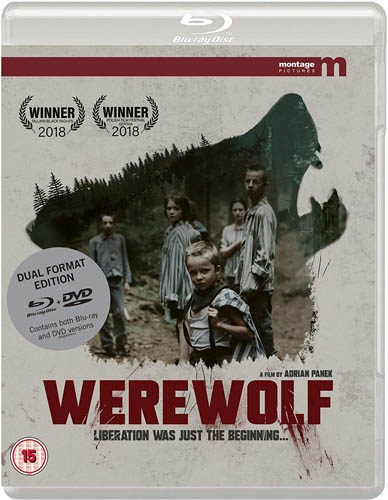
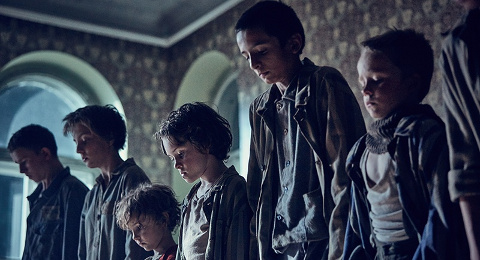
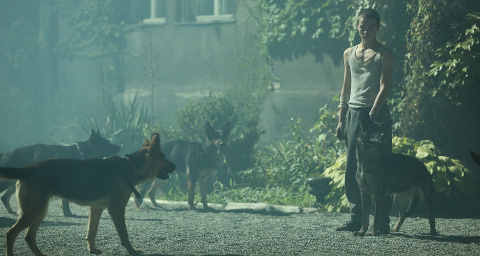

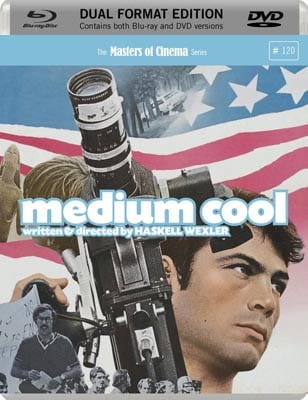
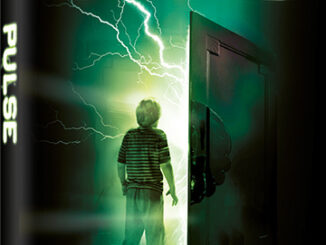

Be the first to comment